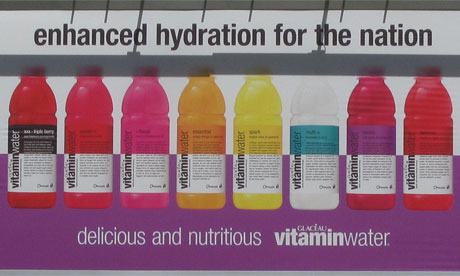The issue is that Coca-Cola presents the nutritional contents of a 500-ml bottle in terms of five 100-ml servings, whereas the ASA believes consumers will perceive a bottle to represent one serving only. As a result, consumers drink down a lot of vitamins, but also a lot of sugar, in a single bottle.
Here's a quote from the ASA's statement:
We considered that consumers would understand the word "nutritious" in the context of the ad as a claim that Vitaminwater contained added ingredients that were needed by the body in order to stay healthy. However, we considered that they would not expect a "nutritious" drink to have the equivalent of four or five teaspoons of added sugar. Because Vitaminwater contained about a quarter of a consumer's GDA for sugar as well as the added vitamins, we considered that the description of Vitaminwater as "nutritious" was misleading.Coca-Cola was, understandably, disappointed with the ASA's decision. Its response:
We have always been completely transparent that the drinks contain 23g of sugar in each 500ml bottle, which has been prominently labelled on pack since launch. We do not believe that this detracts from the vitamin and mineral content of the drinks. We are therefore disappointed with the ASA's decision to uphold three consumer complaints based on a difference in opinion over the use of the word 'nutritious'.In this case, I agree with the ASA. Coca-Cola does disclose nutritional content, but consumers tend to see a bottle as a single serving. Labels should reflect a typical consumer's view.


